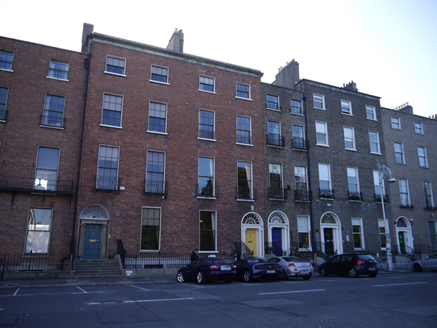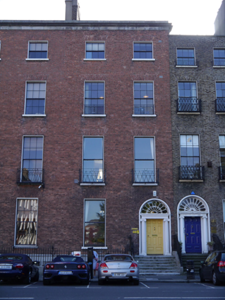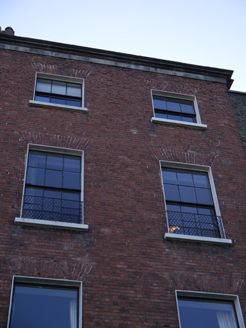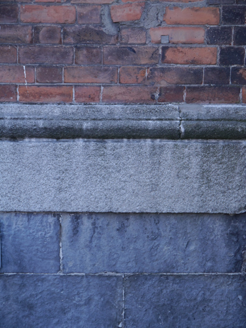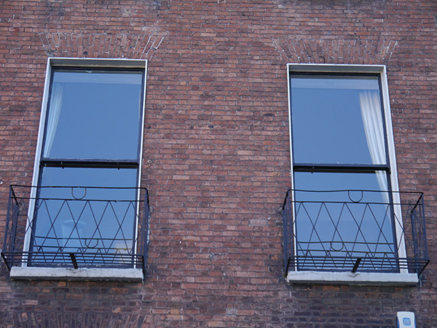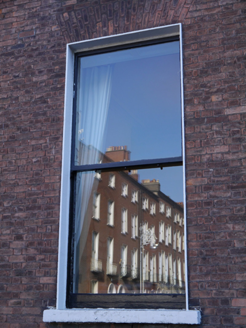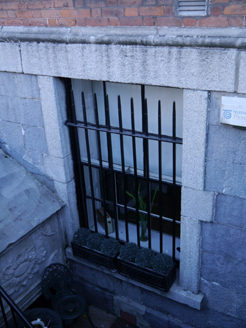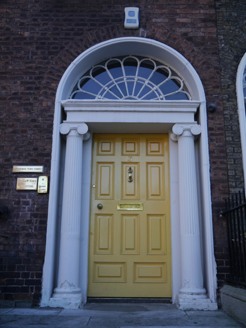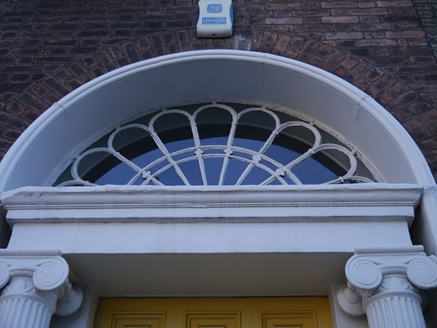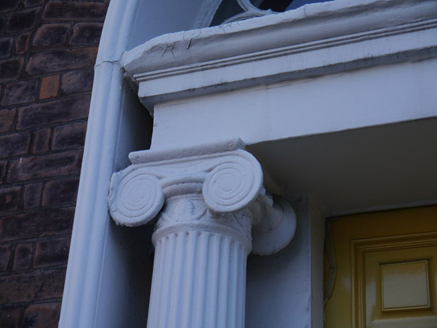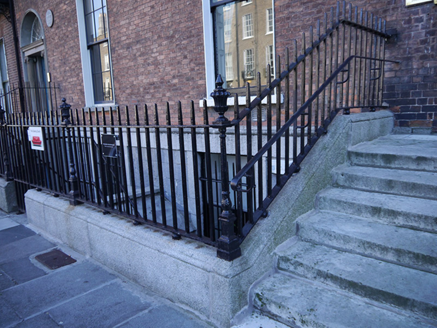Survey Data
Reg No
50930114
Rating
Regional
Categories of Special Interest
Architectural, Artistic
Original Use
House
In Use As
Office
Date
1815 - 1825
Coordinates
316604, 233069
Date Recorded
25/09/2015
Date Updated
--/--/--
Description
Attached two-bay four-storey over basement former townhouse, built c. 1820, as a pair with adjoining building to north (50930113). Two-stage return to rear. Now in use as offices. Triple-span pitched roofs, hipped to south, concealed by ashlar granite parapet with moulded cornice and blocking course. Rendered chimneystacks to north party wall over brown brick bases, with lipped clay pots. Parapet gutters. Red brick walling laid in Flemish bond over tooled ashlar limestone walling to basement beneath granite plinth course. Square-headed window openings with brick voussoirs, patent reveals and masonry sills, granite surrounds to basement. Iron guard-rails to second floor, iron balconettes to first floor and cast-iron grille to basement. Largely six-over-six timber sliding sash windows, three-over-three to third floor, one-over-one with ogee horns to ground and first floors. Some Wyatt-style windows to rear (east) elevation and return, canted oriel (possibly bay window) to ground floor of rear elevation. Round-headed door opening with brick voussoirs, moulded reveals and recessed rendered surround containing a prostyle portico with frieze and moulded cornice carried on Ionic columns over plinth stops, petal iron fanlight and raised-and-field timber panelled door with replacement furniture. Granite entrance platform approached by seven steps flanked by iron railings with decorative cast-iron corner posts on granite plinth, enclosing basement area to north-side. Original water tank to area. Coal-hole cover to pavement. Altered two-storey mews building to rear (east) with M-profile roof, refaced brick walls, bipartite timber casement windows with granite sills and round-headed integral carriage-arch to south end. Vehicular opening framed by recent brick piers to eastern boundary on Lad Lane, abutted by rubble wall to north with square-headed door opening having rendered surrounds and timber sheeted pedestrian door.
Appraisal
Built as pair to the designs of Henry, Mullins & McMahon, Nos. 2-3 are distinguished by a higher parapet level than the neighbouring terraces and, in conjunction with No. 5, dominate the south-eastern side of the Square. The retention of its original water tank is particularly rare. Forming part of a relatively intact late-Georgian streetscape. Laid out in 1791 by the surveyors J & P Roe, Fitzwilliam Square was the last of the city’s Georgian squares to be completed. Development was staggered, progressing slowly until after the Napoleonic Wars, with the vast majority of houses on the eastern side of the square completed between 1816-22. Although largely homogenous in character and form, the subtle variations between terraces are indicative of the speculative nature of the Square’s development.
